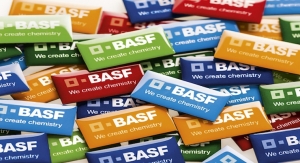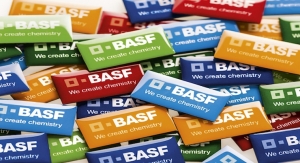Kerry Pianoforte, Editor 03.04.19
Coatings World recently interviewed Gops Pillay, president of dispersions and pigments at BASF.
Coatings World: How did the market for paints and coatings fare overall in 2018?
Pillay: We saw modest global GDP growth in 2018 while the second half was overshadowed by weakening market sentiment and trade policy uncertainty. We also saw the paints and coatings industry turning more competitive considering the inflating raw material costs and tighter environmental regulations in key markets and so on.
CW: Did your company see an increase in revenue in 2018?
Pillay: 2018 was quite a challenging year due to FX impacts, increasing competitions and raw material price increases. Despite the challenging business environment, we are further adjusting our growth strategy moving forward to better adapt to market needs in 2019.
CW: What areas of the paint and coatings market represent the most growth opportunities for your company?
Pillay: We will continue to drive growth in markets such as Europe, Asia Pacific, South America and the Middle East. We see great possibilities to grow our business in architectural coatings, construction, industrial coatings (metal) and wood coatings in APAC – particularly in China.
We leverage strategic asset footprint in the emerging market in APAC to drive the adoption of more eco-friendly and functional coatings in the region. We will continue to shape the market towards water-based, low-VOC technologies in close collaboration with new standards and regulations by the government. Clear and measurable objectives have been laid down in the China 13th five years plan of VOC prevention program per coating market segments with ecotax systems and licenses that penalize usage of solvent.
We have been continuously expanding the R&D footprint in APAC to drive innovation by integrating customer and market needs at an early stage. As such, we are leading the launch of sustainable solutions such as near-zero VOC emission and low odor dispersions to address the increasing awareness on health and wellness from end-users and the regulatory requirements.
We also have several successful cases on using biomass balance approach solution in coatings in which we have increased the awareness of using renewable raw materials. We brought it to APAC last year and partnered with one of our key partners, Nippon Paint, in China. The results have been encouraging, and we will continue to drive this sustainable solution in APAC and other regions this year.
For standard architectural coatings, we will actively address the standards with innovations to help our customers offer competitive but durable solutions for this segment together with our additives portfolios. We will also complement our offerings with selective new waterborne concepts for the construction industry, e.g. sealants and gap fillers in APAC.
BASF offers a comprehensive toolbox to support paint formulators to convert to water-based coatings that encompass resins (1K acrylic dispersions and 2K polyurethanes systems) along with a complete portfolio of additives (dispersant, rheology, slip and leveling aids). We extend this support through its laboratories in China in terms of formulation and troubleshooting, which is crucial to establish new paint systems.
Besides China, we see substantial growth opportunities in markets such as India, Africa and ASEAN.
CW: What is your business strategy for growth in 2019 and beyond?
Pillay: Considering the uncertainty in the global economic situation, we remain cautious on the outlook for 2019. We aim to achieve profitable organic growth through innovation and customer intimacy. Strategy for our dispersions and pigments business will revolve around R&D, sustainability and digitalization to offer higher-performing coatings that are more sustainable and cost-effective.
Our new corporate strategy has recently brought our research units closer to business and customer needs. With our research and development teams working as one organization, we will further strengthen our innovation portfolios to shorten time-to-market. As part of our focus on growth opportunities, sustainability stewardship plays a crucial role in driving our R&D development and ensuring regulatory compliance for our customers. With the development of digitalization solutions, we will drive innovation in our business models and foster deeper collaborations in R&D, marketing and supply chain, offering advanced solutions in the growing paints and coatings market to our customers.
CW: In what areas are you focusing your R&D efforts?
Pillay: Customer demands for cost-effective, sustainable and environmental-friendly solutions/products for various industry sectors are on the rise. While innovations are key to meeting these needs, our R&D organization is aptly structured to enable innovative solutions and new technologies to flourish in an area such as water-based coatings based on our polymers, additives and reactive resins portfolios.
Customer-driven innovations play a key role in our R&D development. Our team is actively involved in joint development projects with key customers in all strategic relevant markets such as architectural coatings and adhesives to sustain and strengthen our future business.
CW: What are your company's long-term plans?
Pillay: We are aware that as the leading chemical company we have to further build on our strengths. BASF launched a new corporate strategy in November 2018 with an aim to drive profitable growth in all regions. We have one clear ambition ahead: our customers should have a new experience with BASF. Our teams want to anticipate and fulfill our customers’ needs even better.
The new strategy will guide us through the growth journey to strengthen our innovation and operations performance, improve our digital ways of working and integrate sustainability deeply into our business decisions. We aim to strengthen our portfolio using the power of our Verbund integration and we will further develop our organization to run effectively and efficiently to focus on our customers.
We set ambitious targets and measure our success against key performance indicators both financial and non-financial. We aim to grow our sales volumes faster than the growth of global chemical production while we also commit to combine profitable growth with a sustainable target of CO2-neutral growth until 2030 and having 80 percent of our suppliers improve their sustainability performance upon reevaluation.
It is also our goal to pursue good positioning in the growing Asian market, especially in China. With a world market share of more than 30 percent, China is the world’s largest chemical market and drives the growth of chemical production. By 2030, China’s share will increase to nearly 50 percent, and we want to participate in this growth.
None of the above will be possible without the support of our employees. It is why we are setting a target for employee satisfaction. We want more than 80 percent of our employees to feel that at BASF they can thrive and perform at their best.
Coatings World: How did the market for paints and coatings fare overall in 2018?
Pillay: We saw modest global GDP growth in 2018 while the second half was overshadowed by weakening market sentiment and trade policy uncertainty. We also saw the paints and coatings industry turning more competitive considering the inflating raw material costs and tighter environmental regulations in key markets and so on.
CW: Did your company see an increase in revenue in 2018?
Pillay: 2018 was quite a challenging year due to FX impacts, increasing competitions and raw material price increases. Despite the challenging business environment, we are further adjusting our growth strategy moving forward to better adapt to market needs in 2019.
CW: What areas of the paint and coatings market represent the most growth opportunities for your company?
Pillay: We will continue to drive growth in markets such as Europe, Asia Pacific, South America and the Middle East. We see great possibilities to grow our business in architectural coatings, construction, industrial coatings (metal) and wood coatings in APAC – particularly in China.
We leverage strategic asset footprint in the emerging market in APAC to drive the adoption of more eco-friendly and functional coatings in the region. We will continue to shape the market towards water-based, low-VOC technologies in close collaboration with new standards and regulations by the government. Clear and measurable objectives have been laid down in the China 13th five years plan of VOC prevention program per coating market segments with ecotax systems and licenses that penalize usage of solvent.
We have been continuously expanding the R&D footprint in APAC to drive innovation by integrating customer and market needs at an early stage. As such, we are leading the launch of sustainable solutions such as near-zero VOC emission and low odor dispersions to address the increasing awareness on health and wellness from end-users and the regulatory requirements.
We also have several successful cases on using biomass balance approach solution in coatings in which we have increased the awareness of using renewable raw materials. We brought it to APAC last year and partnered with one of our key partners, Nippon Paint, in China. The results have been encouraging, and we will continue to drive this sustainable solution in APAC and other regions this year.
For standard architectural coatings, we will actively address the standards with innovations to help our customers offer competitive but durable solutions for this segment together with our additives portfolios. We will also complement our offerings with selective new waterborne concepts for the construction industry, e.g. sealants and gap fillers in APAC.
BASF offers a comprehensive toolbox to support paint formulators to convert to water-based coatings that encompass resins (1K acrylic dispersions and 2K polyurethanes systems) along with a complete portfolio of additives (dispersant, rheology, slip and leveling aids). We extend this support through its laboratories in China in terms of formulation and troubleshooting, which is crucial to establish new paint systems.
Besides China, we see substantial growth opportunities in markets such as India, Africa and ASEAN.
CW: What is your business strategy for growth in 2019 and beyond?
Pillay: Considering the uncertainty in the global economic situation, we remain cautious on the outlook for 2019. We aim to achieve profitable organic growth through innovation and customer intimacy. Strategy for our dispersions and pigments business will revolve around R&D, sustainability and digitalization to offer higher-performing coatings that are more sustainable and cost-effective.
Our new corporate strategy has recently brought our research units closer to business and customer needs. With our research and development teams working as one organization, we will further strengthen our innovation portfolios to shorten time-to-market. As part of our focus on growth opportunities, sustainability stewardship plays a crucial role in driving our R&D development and ensuring regulatory compliance for our customers. With the development of digitalization solutions, we will drive innovation in our business models and foster deeper collaborations in R&D, marketing and supply chain, offering advanced solutions in the growing paints and coatings market to our customers.
CW: In what areas are you focusing your R&D efforts?
Pillay: Customer demands for cost-effective, sustainable and environmental-friendly solutions/products for various industry sectors are on the rise. While innovations are key to meeting these needs, our R&D organization is aptly structured to enable innovative solutions and new technologies to flourish in an area such as water-based coatings based on our polymers, additives and reactive resins portfolios.
Customer-driven innovations play a key role in our R&D development. Our team is actively involved in joint development projects with key customers in all strategic relevant markets such as architectural coatings and adhesives to sustain and strengthen our future business.
CW: What are your company's long-term plans?
Pillay: We are aware that as the leading chemical company we have to further build on our strengths. BASF launched a new corporate strategy in November 2018 with an aim to drive profitable growth in all regions. We have one clear ambition ahead: our customers should have a new experience with BASF. Our teams want to anticipate and fulfill our customers’ needs even better.
The new strategy will guide us through the growth journey to strengthen our innovation and operations performance, improve our digital ways of working and integrate sustainability deeply into our business decisions. We aim to strengthen our portfolio using the power of our Verbund integration and we will further develop our organization to run effectively and efficiently to focus on our customers.
We set ambitious targets and measure our success against key performance indicators both financial and non-financial. We aim to grow our sales volumes faster than the growth of global chemical production while we also commit to combine profitable growth with a sustainable target of CO2-neutral growth until 2030 and having 80 percent of our suppliers improve their sustainability performance upon reevaluation.
It is also our goal to pursue good positioning in the growing Asian market, especially in China. With a world market share of more than 30 percent, China is the world’s largest chemical market and drives the growth of chemical production. By 2030, China’s share will increase to nearly 50 percent, and we want to participate in this growth.
None of the above will be possible without the support of our employees. It is why we are setting a target for employee satisfaction. We want more than 80 percent of our employees to feel that at BASF they can thrive and perform at their best.




























